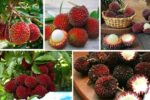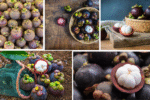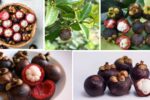Flowers in your salad? Absolutely. Edible flowers are not only a feast for the eyes but also elevate your dish with unique flavors ranging from spicy to sweet and everything in between. These natural gems offer a creative way to add color, aroma, and subtle flavor to salads. Whether you’re preparing a garden-fresh summer mix or impressing guests at a dinner party, these ten edible flowers can turn a simple salad into a work of culinary art.
1. Nasturtiums

Nasturtiums are a favorite among edible flower enthusiasts thanks to their vibrant colors and peppery, slightly spicy taste that resembles watercress. Available in bold hues like orange, red, and yellow, nasturtiums make a striking visual contrast against leafy greens. Both the blossoms and the leaves are edible, giving you more ways to experiment in your salad bowl. Nasturtiums pair well with citrusy dressings, soft cheeses, and nuts, making them a go-to choice for a salad that’s as flavorful as it is beautiful.
2. Pansies

Pansies are not only visually captivating with their multicolored “faces,” but they also bring a subtle grassy, slightly sweet flavor to salads. These delicate blooms come in nearly every shade, including purples, blues, and yellows, and can be used whole or with petals scattered over the top of a salad. Pansies work best in lightly dressed salads where their flavor isn’t overpowered. They’re perfect for spring salads that feature baby greens, berries, or goat cheese.
3. Calendula (Marigold)

Calendula, often referred to as the “poor man’s saffron,” offers bright orange or yellow petals and a slightly tangy, peppery flavor. These petals can be used like herbs—chopped or sprinkled—to add both color and zest to your salad. Calendula is a versatile addition, complementing everything from vinaigrettes to creamy dressings. Aside from their culinary value, they also boast anti-inflammatory properties, adding a healthful bonus to their beauty.
4. Chive Blossoms

Chive blossoms are globe-shaped flowers with a lovely lavender hue, and they pack a surprisingly bold onion flavor. These mini explosions of flavor are ideal for savory salads and pair especially well with hard cheeses, bacon, or potato-based greens. Simply separate the tiny florets from the main head and sprinkle them throughout your salad for a burst of color and a mild kick. They’re an excellent choice for anyone who loves a hint of allium without overpowering the dish.
5. Borage

With their bright blue, star-shaped flowers, borage is a stunning addition to any salad. These blooms have a mild cucumber flavor, making them a refreshing complement to greens like spinach, arugula, or romaine. Borage flowers are delicate and should be used fresh, just before serving. They’re excellent in summer salads featuring ingredients like melon, citrus, or feta cheese. Plus, their unique color can make any dish Instagram-worthy.
6. Violas

Violas are small, dainty flowers that come in a range of vivid colors. They offer a mild, slightly sweet flavor and are commonly used in both savory and sweet salads. Their compact size makes them ideal for garnish, or they can be scattered whole throughout a salad. Violas are best used fresh and combined with similarly delicate greens like baby kale or butter lettuce. They’re also a great fit for fruit-based salads with ingredients like strawberries or citrus segments.
7. Arugula Flowers

Arugula flowers are tiny white or yellow blooms with dark veins, and they bring the same peppery punch as arugula leaves, albeit with a more delicate appearance. These flowers are best used when you’re looking to intensify the flavor of a salad without relying solely on the leaves. Arugula flowers are especially tasty when paired with Parmesan shavings, toasted seeds, and a drizzle of balsamic glaze. They add depth and a gourmet twist to everyday salads.
8. Dianthus (Pinks)

Dianthus, often called “pinks” for the fringed edge of their petals, brings a clove-like spiciness to salads. Their vibrant pink, red, or white colors enhance the visual appeal, while their scent and flavor elevate the overall experience. Only the petals are edible, and it’s important to remove the bitter white base. Dianthus pairs well with fruit, nuts, and soft cheeses, making it an excellent choice for spring or brunch-style salads.
9. Lavender

Lavender adds a floral, slightly sweet flavor with hints of mint and citrus. While strong in taste, using the flowers sparingly in a salad provides a surprising and elegant note. Lavender buds can be tossed into salads featuring berries, goat cheese, or grilled peaches for a gourmet touch. It’s particularly lovely in salads served with honey-based vinaigrettes or citrus dressings. A little goes a long way, so use it as an accent rather than a main feature.
10. Bee Balm (Monarda)

Bee Balm, also known as wild bergamot, produces striking red, pink, or purple flowers that offer a spicy, minty flavor. These blooms work wonderfully in robust salads featuring bold greens like arugula or mustard greens. Bee balm petals can be stripped and scattered, adding both zest and visual flair. Their slightly herbal note complements vinaigrettes made with lemon, mustard, or vinegar. In addition to their culinary value, they attract pollinators great for garden-grown salads.





Leave A Comment